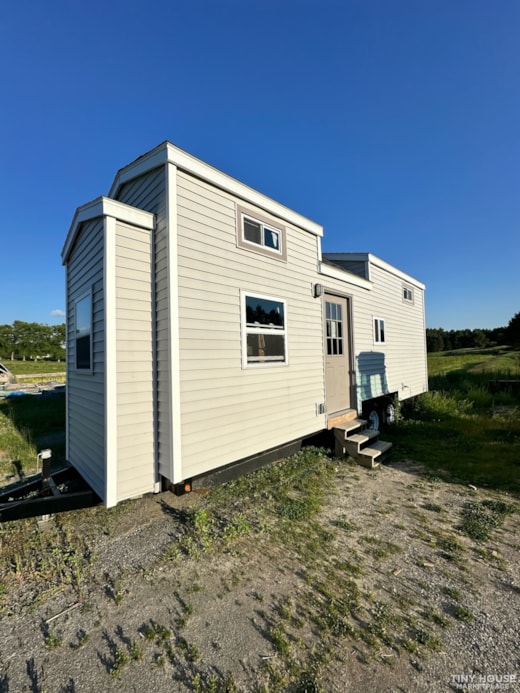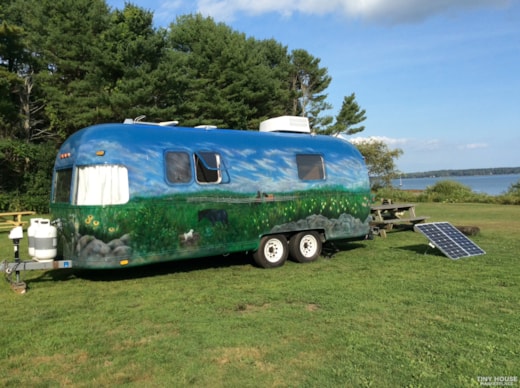In Vermont, the rules and regulations for tiny houses depend on whether the tiny house is on wheels (THOW) or on a permanent foundation. Here are the key points to consider:
- Zoning Laws: Zoning laws in Vermont are determined at the local level, meaning each city or county can have different regulations. Generally, tiny houses on wheels are classified as recreational vehicles (RVs) and must comply with the state's RV standards. Tiny houses on permanent foundations must comply with local zoning ordinances and building codes.
- Building Codes: Tiny houses on permanent foundations must comply with the Vermont Building Code (VBC), which is based on the International Residential Code (IRC). This includes requirements for safety, sanitation, and structural integrity. Tiny houses on wheels must comply with RV standards and may need to be certified by the Recreational Vehicle Industry Association (RVIA).
- Parking and Living: Tiny houses can be parked in RV parks, on private property (with permission), or in designated tiny house communities. However, it is essential to check local zoning laws and obtain any necessary permits before parking your tiny house.
House Types in Vermont
Vermont recognizes several types of housing, including single-family homes, multi-family homes, and accessory dwelling units (ADUs). Tiny houses can fit into these categories depending on their construction and location:
- Single-Family Homes: Tiny houses on permanent foundations can be considered single-family homes if they meet the state building code requirements.
- Accessory Dwelling Units (ADUs): Vermont allows for the construction of ADUs on residential lots. A tiny house can be considered an ADU if it meets local zoning and building code requirements. This is a popular option for those looking to add a tiny house to their property as a secondary dwelling.
- Recreational Vehicles (RVs): Tiny houses on wheels are often classified as RVs. They can be parked in RV parks or on private property, but they must comply with RV standards and local regulations.
Counties in Vermont that Allow Tiny Houses
Several counties in Vermont have embraced the tiny house movement and have specific regulations that permit tiny houses. Here are a few examples:
- Chittenden County: Allows tiny houses on wheels to be parked in RV parks and on private property with certain restrictions. Tiny houses on permanent foundations are also permitted as ADUs.
- Washington County: Permits tiny houses on wheels in RV parks and on private property. Tiny houses on permanent foundations can be built as single-family homes or ADUs.
- Windham County: Supports the development of tiny house communities and allows tiny houses on wheels in RV parks and on private property.
- Addison County: Allows tiny houses on wheels in RV parks and on private property. Tiny houses on permanent foundations are permitted as single-family homes or ADUs.
It is important to note that regulations can vary significantly between counties and even within different municipalities in the same county. Always check with local authorities to ensure compliance with all applicable laws and regulations.
Tiny House Communities in Vermont
We know of 1 tiny house community in Vermont. Here is short description of each of them.
Headwaters
Learn more about Headwaters here
A Sample of Tiny Houses For Sale in Vermont
We know of 2 tiny houses in Vermont. Here is a sampling of them.
The Royale VI
Completely renovated 1977 Airstream Argosy, move with the seasons
Learn more about this Completely renovated 1977 Airstream Argosy, move with the seasons for sale.
Conclusion
Living in a tiny house in Vermont offers a unique opportunity to embrace a minimalist lifestyle while enjoying the state's natural beauty and welcoming communities. By understanding and adhering to the rules and regulations, you can find the perfect spot to park and live in your tiny house. For more information about tiny houses in Vermont, visit the Tiny Home Builders Marketplace.

